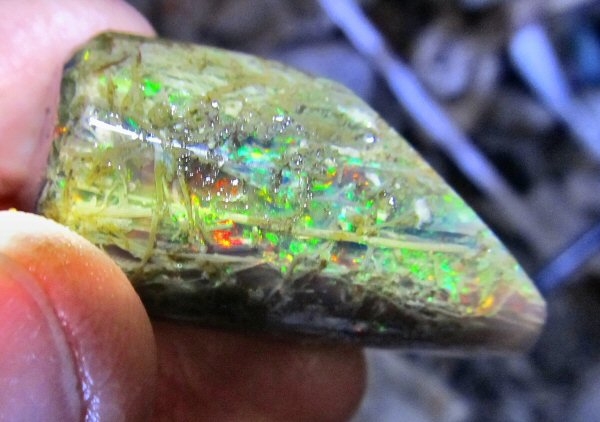
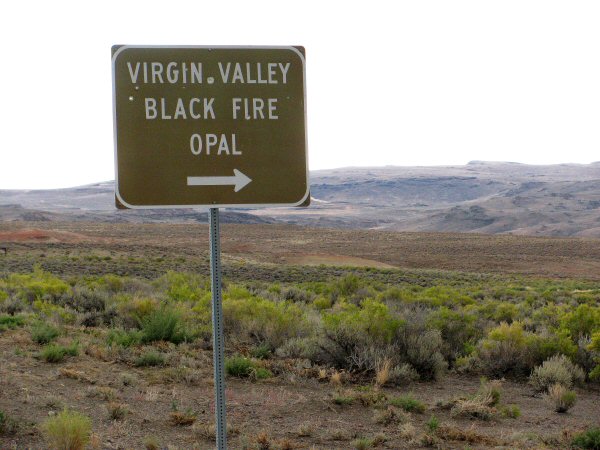
While the high desert of northern Humboldt County, in Nevada may at first appear empty, unpopulated, and even desolate, you might be surprised to learn that within the Virgin Valley mining district, there are thousands of claims, some of them patented, which mean that the Federal Government has passed the title to the claim owner, making it private land. Here, a BLM sign points the way towards a precious opal mining adventure for those rockhounds who want to fee dig at one of the several mines that allow public digging.
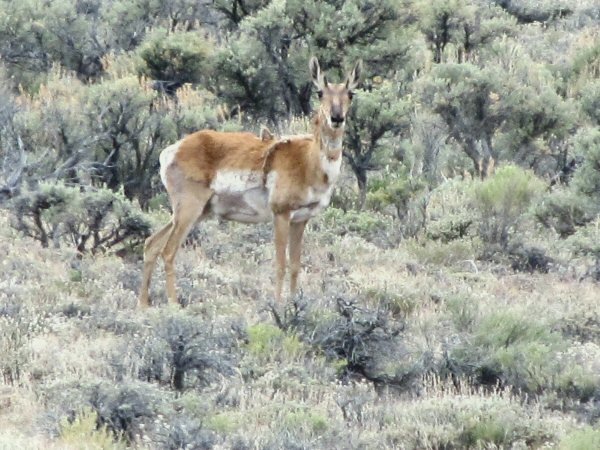
The Virgin Valley mining district is contained within the Sheldon Antelope Refuge. It’s the middle of June, but this female still sports a bit of winter scruff and she might still need it. With elevations on the refuge ranging from 4000 to 7000 feet, cold temperatures are never far away.
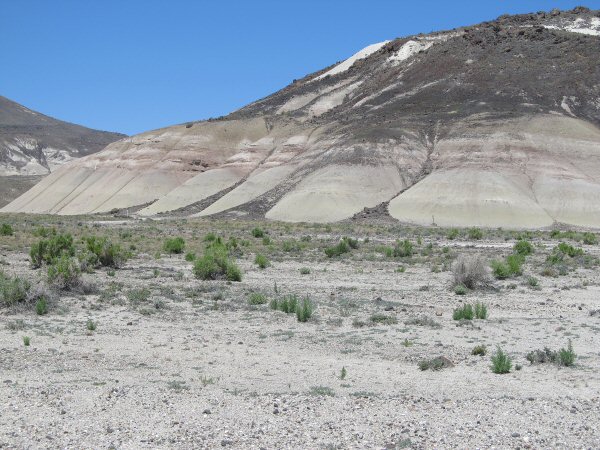
Throughout the valley floor, low mounds of eroding clay yield small chips of petrified wood, yellow colored selenite, and in certain areas, precious opal!
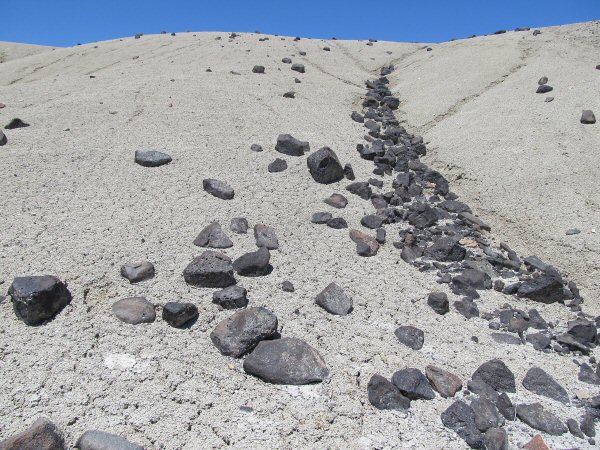
Scattered black cap rock from an ancient horizon that is now all but gone, gives little clue as to the fiery treasure that could be hiding at depth below.

About 20 million years ago, this area was forested, and received over 50 inches of rain annually. This opalized limb of an ancient tree was buried in volcanic ash from eruptions that occurred 12 to 20 million years ago. as the limbs from trees disintegrated in the ground, they left hollow casts which were later filled with a silica solution, as hydrothermal water flows percolated through the ash layer.
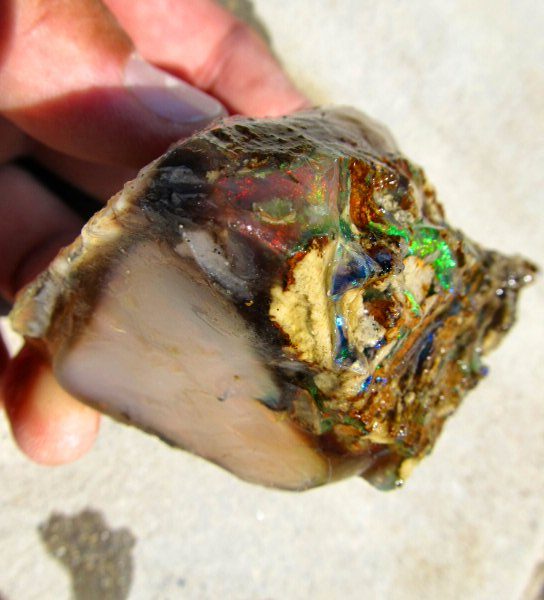
Not all opal is precious. While the rind, or outer skin of this awesome limb shows the mesmerizing play of color that is characteristic of precious opal, you can see that its core is composed of milky opal, also called common opal, which is glassy and beautiful, but does not have the play of color.
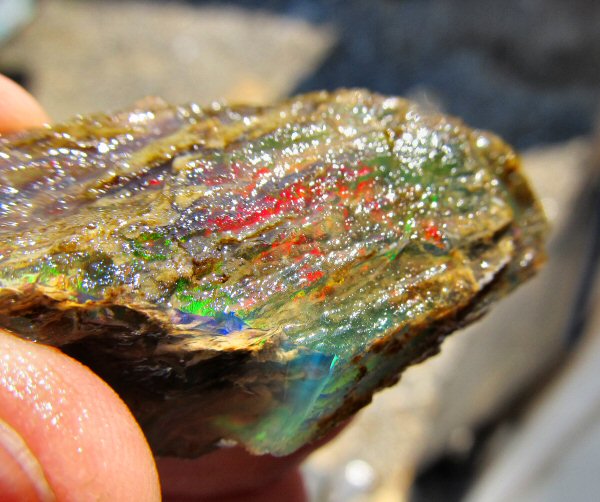
There are varying kinds of “fire” or “play of color” in the Virgin Valley opals. Here a fiery little limb displays “direct fire” which is where you can see the color directly head on, whichever way you turn the opal in the sunlight.
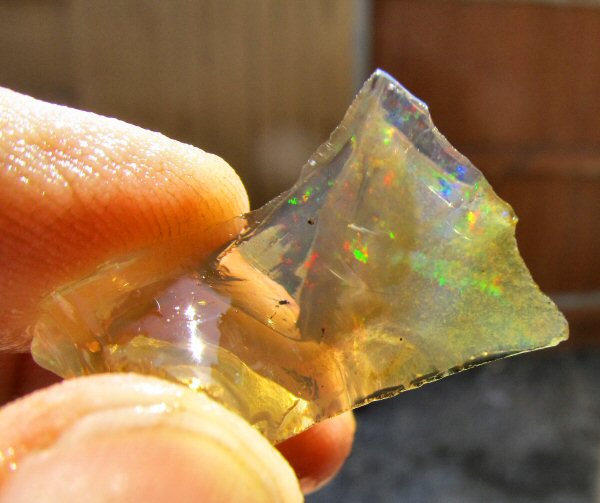
In this photo, a clear glassy opal (known as crystal) displays “contra luz” fire. Literally meaning “against the light”, this type of fire emerges in the opal when you hold it up to the sun, and let the sunlight come through the opal from behind.
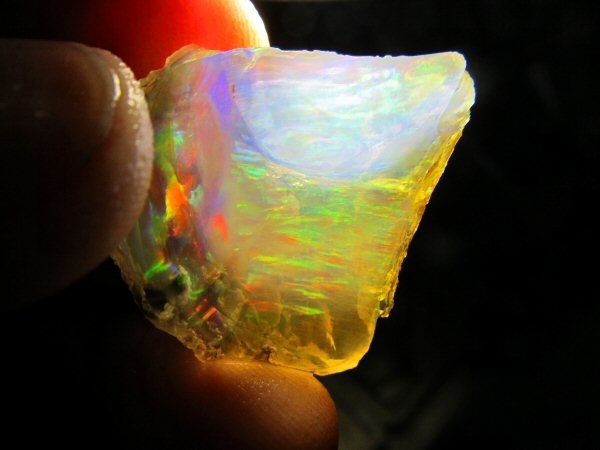
Stringy fire – I’m not sure if this is an accepted gemological term, or if it is one of those rockhound names, but you can see that the fire in this lovely opal is definitely stringy in the main mass. Towards the edge, the fire goes more into “broadflash”.
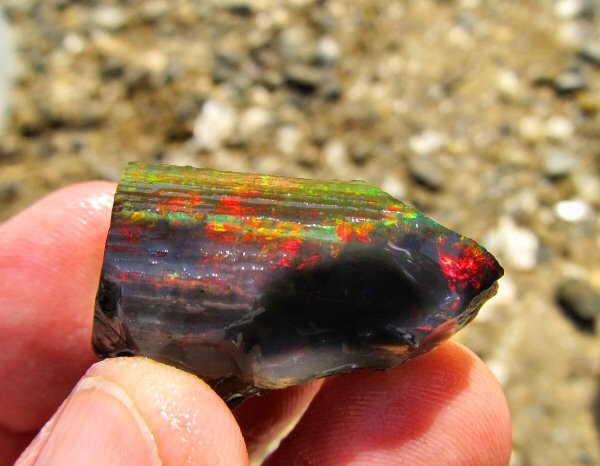
Black Fire – this is the most rare of all the types of opals from the Virgin Valley. And, it’s what the Virgin Valley is famous for. By some accounts, this area is really the only place in the world that produces true black fire opal.
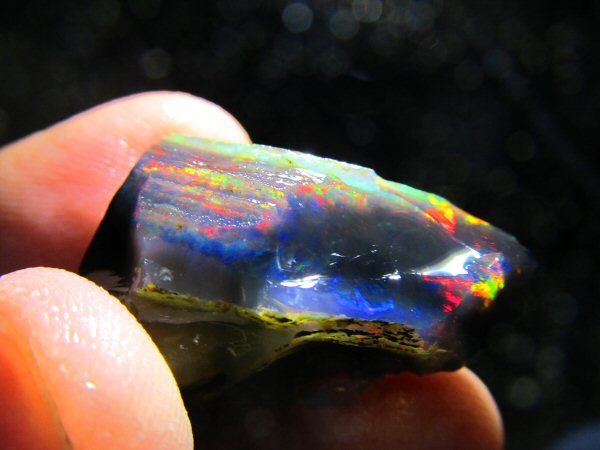
Opals from the Virgin Valley come out of a wet clay layer, and must be kept immersed in water or they will dry out and craze (show a million fractures) possibly greatly reducing their fire, or totally losing it (and with it, their value). While opinions on the successful stabilization (drying out without fracturing) of Virgin Valley opals will vary, one claim owner shared his opinion that the percentage of unstable opals from the area was in the high 90’s. In other words, very few Virgin Valley opals can be used for jewelry making. They are specimen opals only.
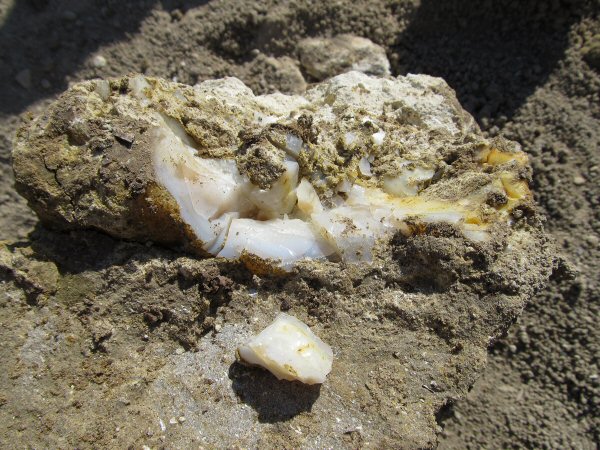
But if the fire can be taken away, it can also be given! Some opals that at first appear only milky, have the potential to “fire up” as they dry out. Here, a freshly dug milky opal still holds that mystery. Some opal hounds have a practice of keeping everything, just in case the white opal decides to fire up later on. Others toss their un-fiery opal, and the tailings diggers coming behind them are hoping to come across some of these discards that have gained fire.
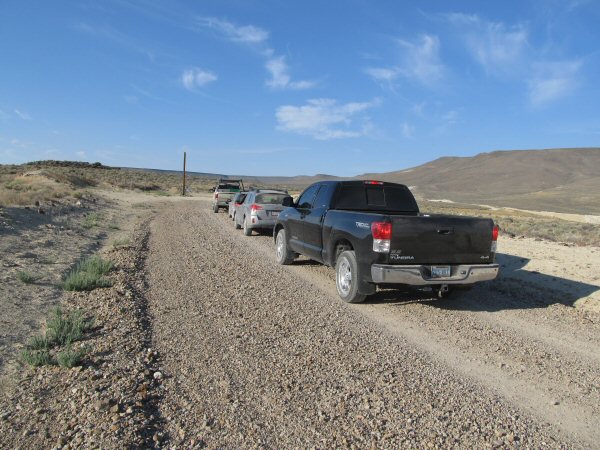
The first mine workings in Virgin Valley were started in 1905. Today, there are more people, claims, and encampments then ever, but it’s still a pretty isolated, and tiny enclave of humanity. Here, opal hounds caravan down dirt roads leading to various claims where they can pay a fee to dig in the tailings, dig in the opal bearing clay on the virgin wall, or buy their opals direct from claim owners and millsites in the valley.
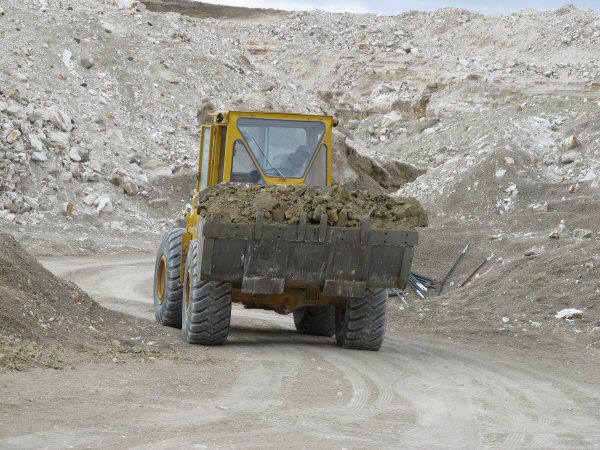
Let’s get digging! Here comes a load of virgin opal bearing clay, fresh out of a mine, as opal diggers wait with great anticipation.
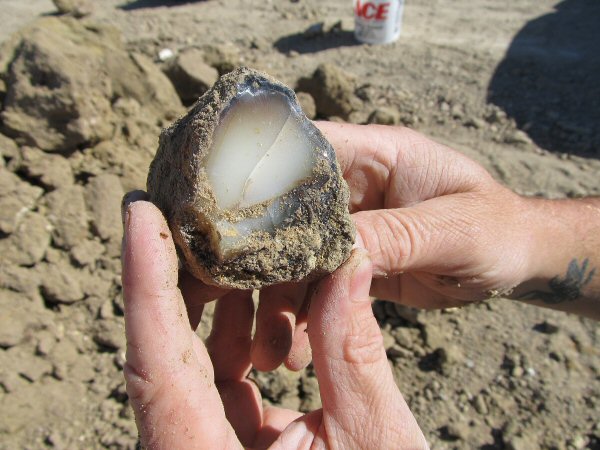
Fresh out into the daylight! A completely opalized limb holds potential for play of color.
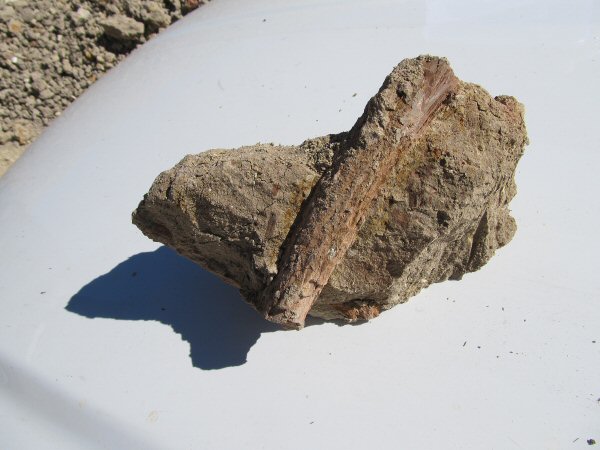
Here, a limb over 6 inches long surfaces, held in the 20 million year old embrace of clay. It doesn’t appear to have any opal content, but still, a long limb like this is a beautiful geological treasure in and of itself.
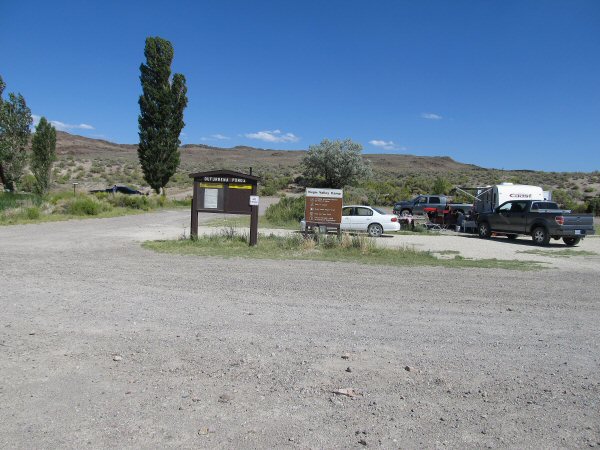
After a day of digging, the nearby CCC camp offers free camping, potable water, restrooms, and a tepid swimming pond complete with toe nibbling minnows.
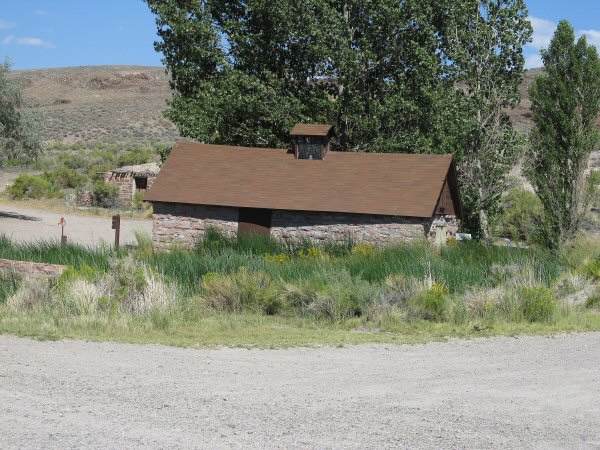
The Friends of the Refuge have restored the old bath house at the CCC Camp, so you can have a shower.
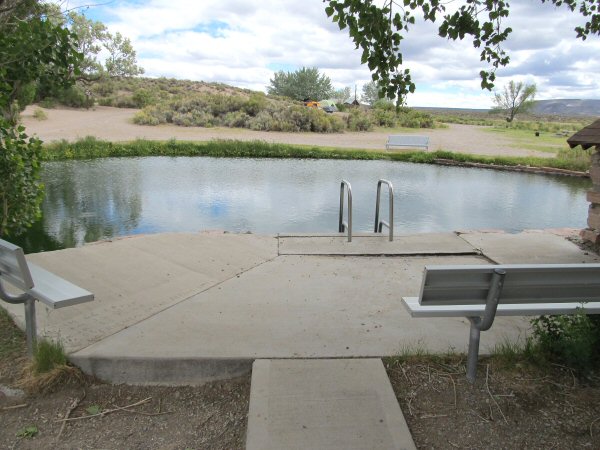
Or just soak your cares away after a hot day’s labors.
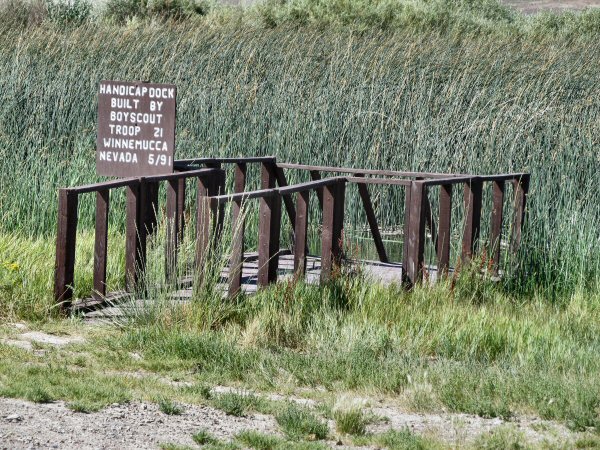
A sweet touch at the CCC Camp, from a local boyscout troop.
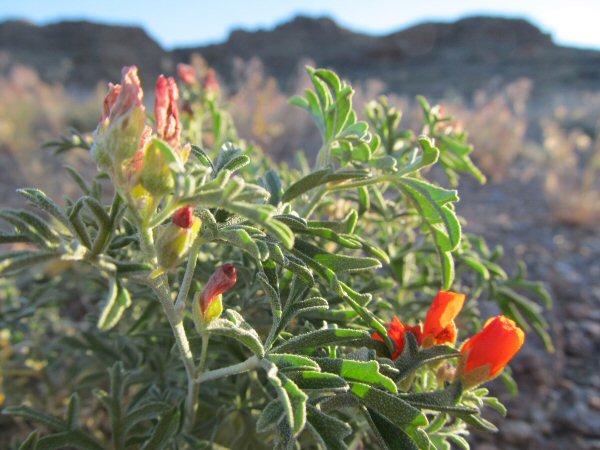
For a quick access field trip that is a good wind-up, or wind-down to opal digging, go directly across Hwy 140 from the main entrance to Virgin Vally, and check the low, chocolate brown rocks that outcrop on that side.
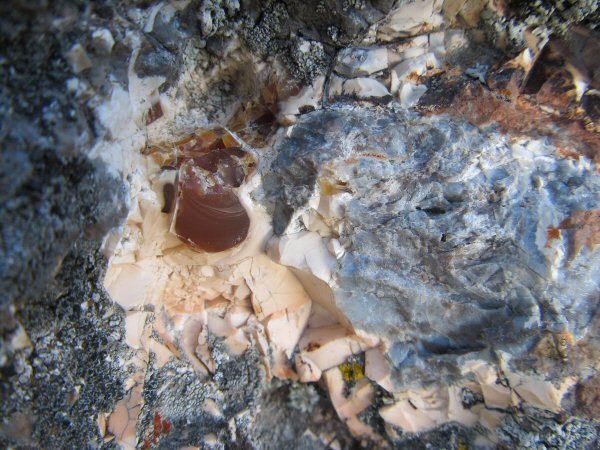
Small chips of a nice, gummy bear orange carnelian can be found throughout the soil below the rock outcrops. But you will need to search dilligently, as this area has been rockhounded by several generations of surface hunters.
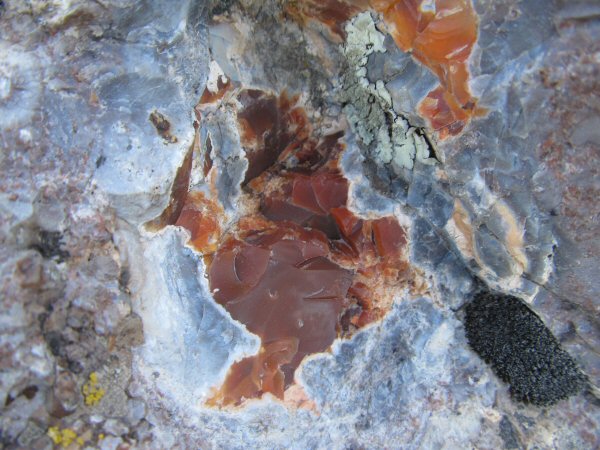
Or take hammer and chisel and attack the rocks themselves, which are the source of the carnelian, and offer tiny pockets of this material. But be forwarned, the rock here is extremely tough!
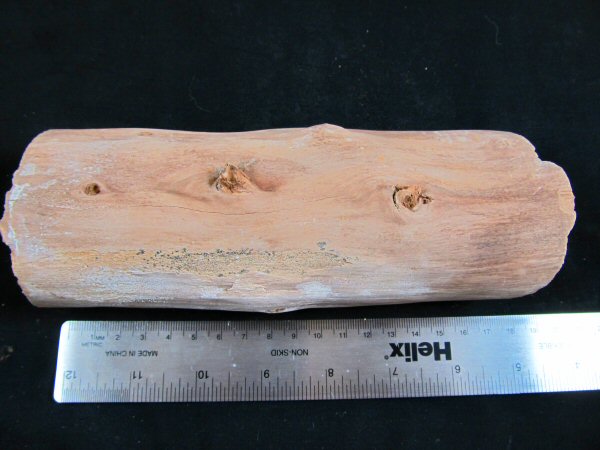
If you can’t find opal when you go digging, you will almost certainly be able to find some “standard” brown petrified wood. Here, a good sized limb that is not opalized has come out of the wall at the Royal Peacock Mine.
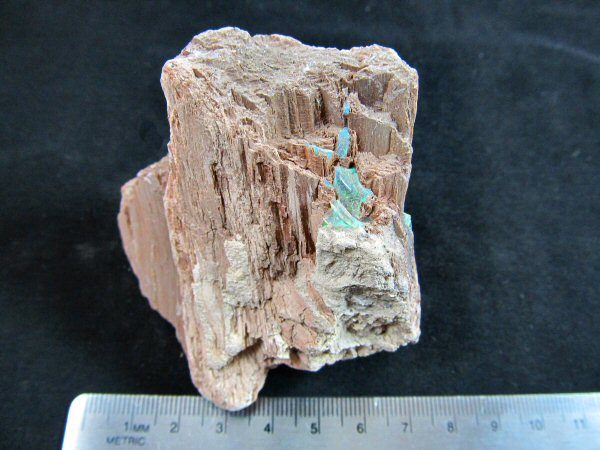
Now this is getting better! Here’s a piece of petrified wood with a thin seam of precious opal traveling through its interior.

A Virgin Valley oddity: an opalized limb with petrified rootlets within. As one claim owner explained, millions of years ago, the area had lakes. As these lakes dried up, willows were among the first trees to colonize the drying lakebeds, and they had aggressive root systems which plumbed some of the hollow casts left in the deeper soil by decayed wood. As the casts filled with silica solution, the roots were encased and fossilized along with the limb cast.
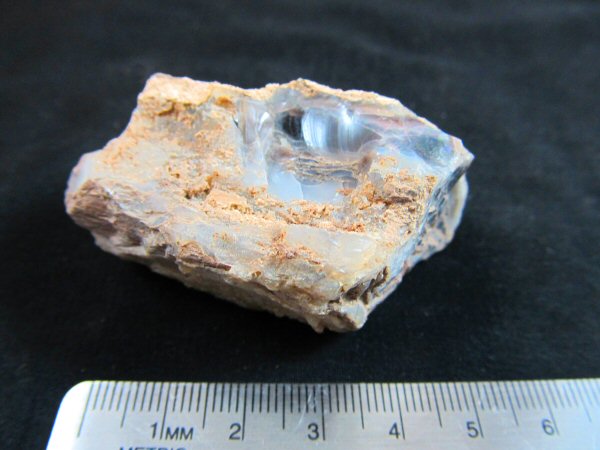
You have to look close. Precious opal can sometimes be easy to miss. This piece of opal didn’t appear to have any areas of fire at first.
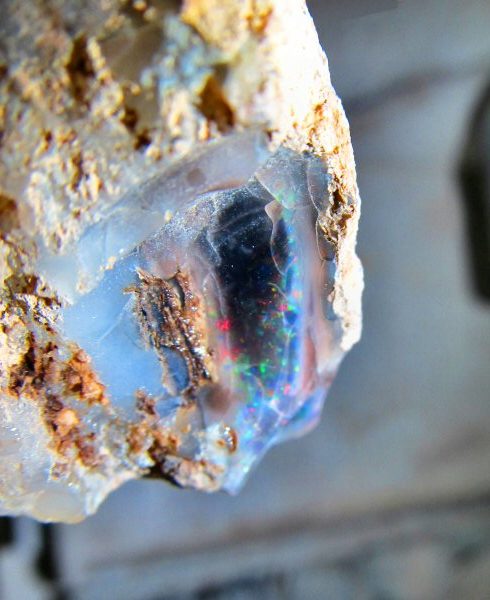
But when a small chip was popped out of the center, it revealed a nice area of rare black fire core that was stable!
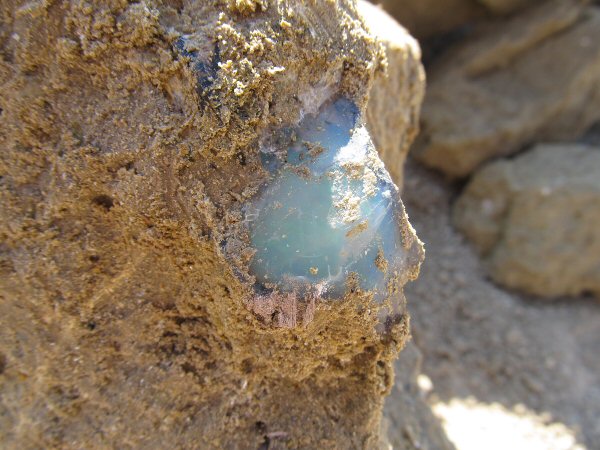
Despite all your best efforts, you might get skunked, and it’s not really your fault if you work hard and find nothing. As one claim owner at the Bonanza Mine put it, “Your chances of finding opal are slim to none”. I dug the wall hard for 7 hours at the Royal Peacock Mine, and got nothing to show for it. But I saw a digger right next to me pull a beautiful precious opal limb!
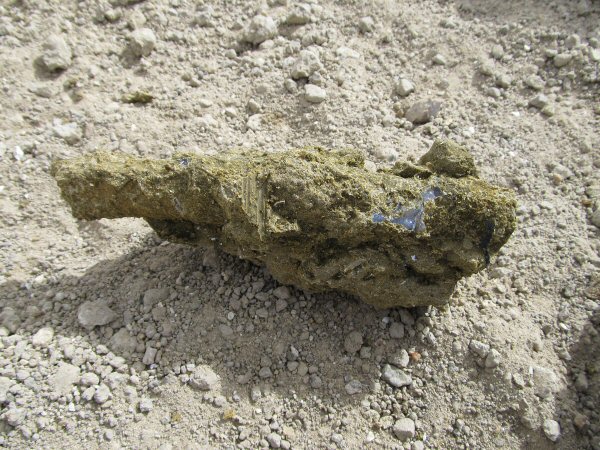
Here, a nice long opalized limb has been found in the opal bearing clay, but shows no hint of color.
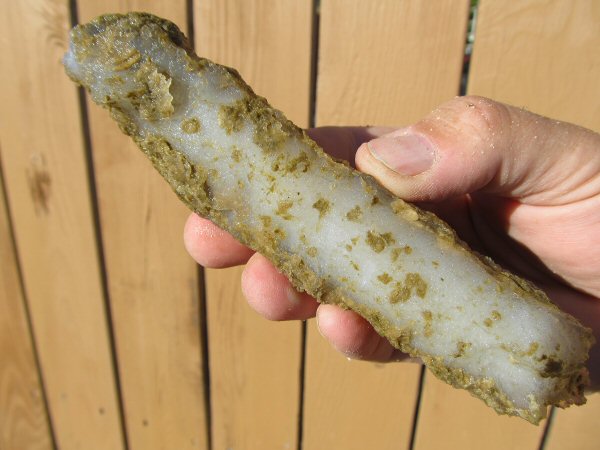
Here it is cleaned up, and it’s really quite a nice specimen of crystal (glass clear) and white opal limb, even if it doesn’t have any color. But this piece could mysteriously fire up later on as it drys out, and of course that’s what everybody hopes for!
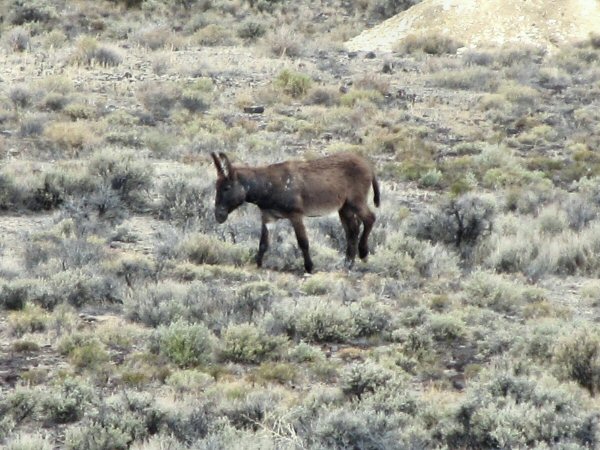
A wild burro brays in the distance, and the sound is overly large and obnoxious in this empty land. It’s as if the burro is laughing at the fool diggers out there scratching at the dirt. And it’s true: we’re pretty far out of our element and engaged in the rockhound equivalent of a Quixotic quest, searching for that proverbial needle in a hundred haystacks!
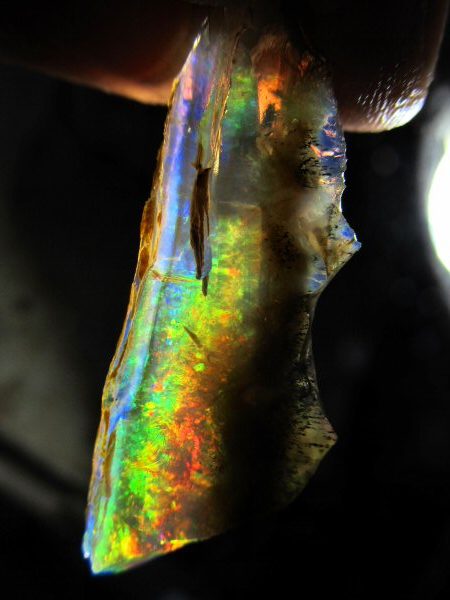
But the lure of black fire keeps diggers coming back to try again!
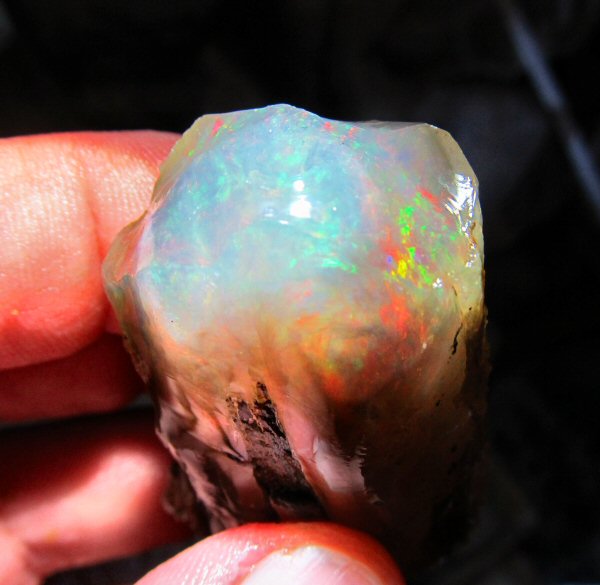
Opalholics, we’re called! And you can see why. Here, a beautiful, large, domed limb shows deep reflected points of colorful fire that dance within, in a way that the camera cannot possibly convey.
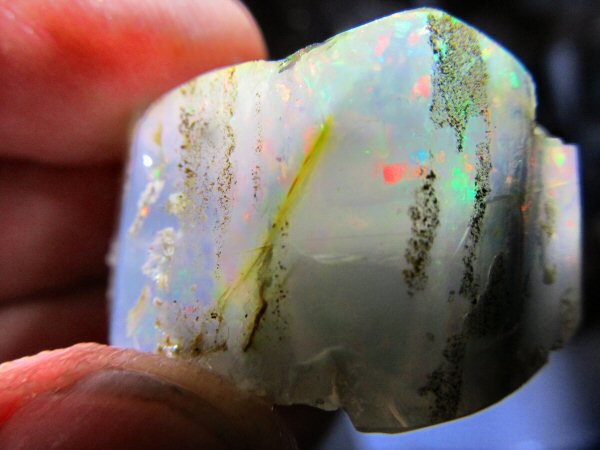
A fiery white limb section shows off some poppin’ flashes.
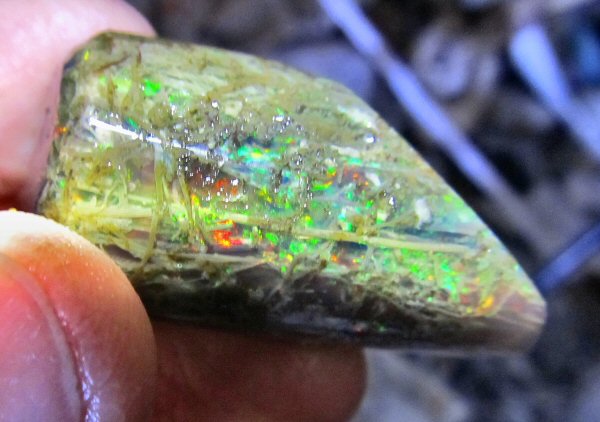
A real sweet, direct fire limb.
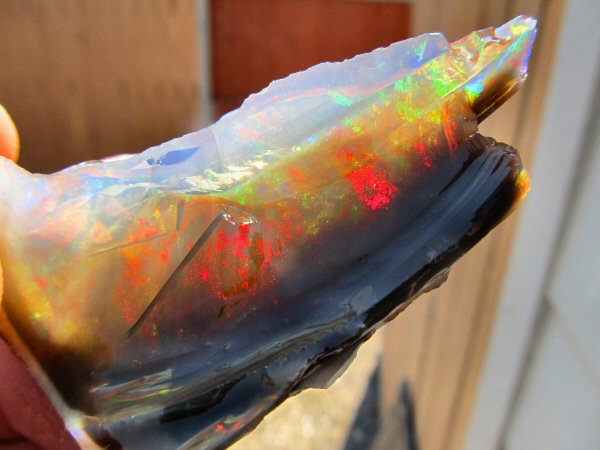
How about this whopper! What are Virgin Valley opals worth? While travel videos on TV toss out big figures as diggers pluck opals from the wall, other claim owners prefer to keep quiet, and let the opal speak for itself. I will say this: some of the opals in these photos, which I purchased from the Bonanza Mine millsite, back in the mid 1990’s, were not very expensive. I’m not sure I am able to believe some of the pricing I’m hearing today.
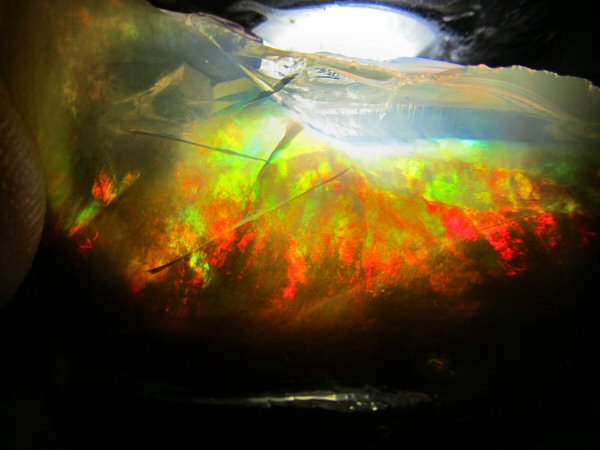
One miner told me that if the Virgin Valley opal was stable, he would just be cutting, and not running a fee dig. I think that’s a telling statement. It’s true that the very best specimens of any kind of mineral, including opal, will always command a high price. So a fantastic specimen opal from the Virgin Valley might be right up there in price, when compared to a fine cuttable opal from Australia. But in general, the capricious, unstable nature of the Virgin Valley opals will probably always preclude them from being readily embraced by the gem industry.
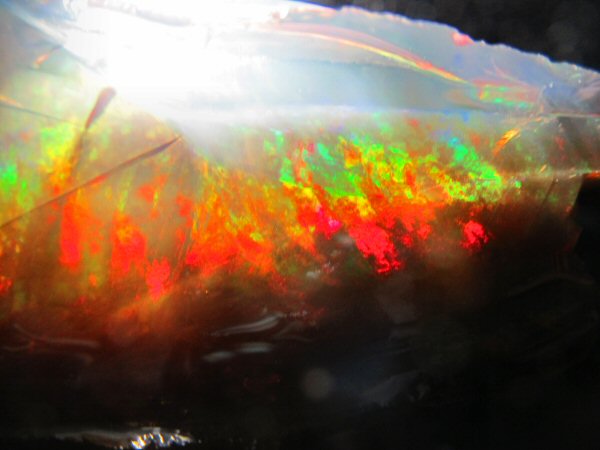
It’s good to admire beauty for beauty’s sake, without notions of price, and the Virgin Valley opals make it easy to do just that. The wall of fire in this opal looks like some other-dimensional realm out of a Star Trek movie. Live long and prosper. And maybe get an opal dig in while you’re out there travelling the universe!

